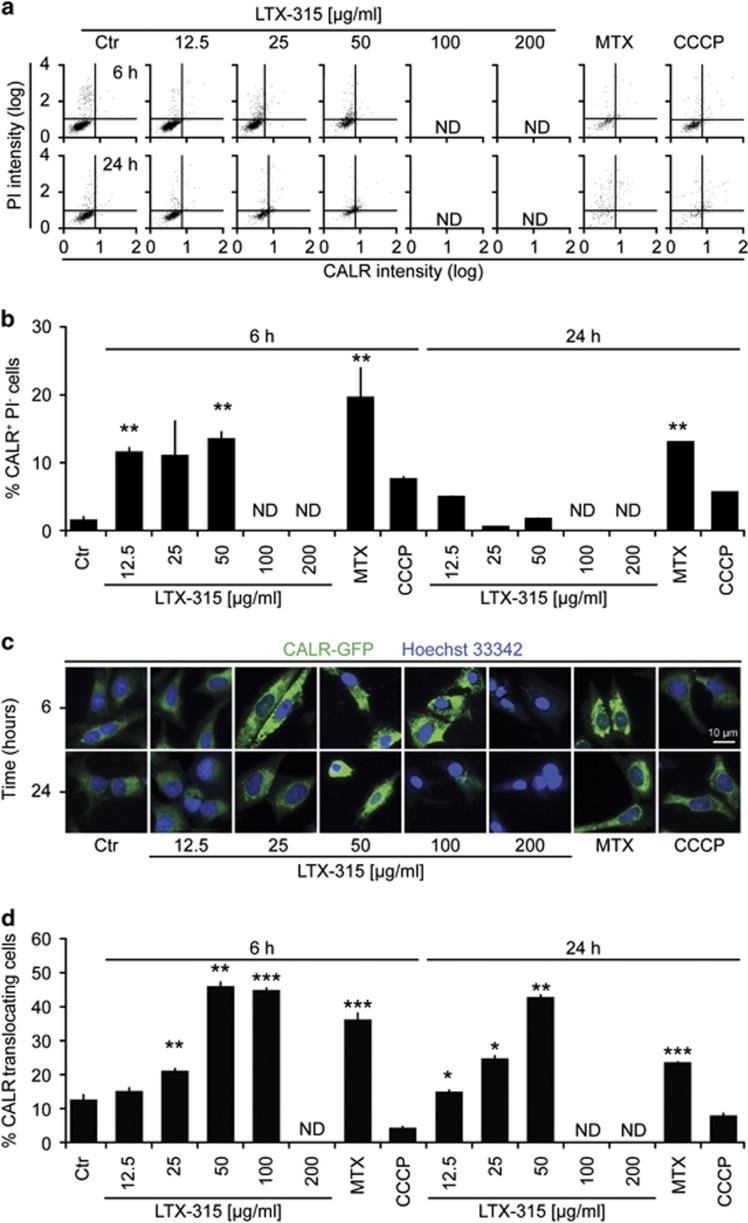Figure 1.
Induction of CALR exposure by LTX-315. (a, b) U2OS cells were treated for the indicated period (6 or 24 h) with LTX-315, MTX, or CCCP. Cells were either subjected to surface immunofluorescence staining to detect CALR in viable, PI-excluding cells (representative cytofluorometry pictograms in a and statistical analyses in b). Note that high concentration of LTX-315 killed >99% of the cells, meaning that the fraction of PI-negative cells was too low to appreciate CRT exposure among them. (c, d) U2OS cells stably expressing a calreticulin-GFP fusion protein were treated with the indicated agents, fixed at the indicated time points, counterstained with the chromatin dye Hoechst 33342 and subjected to automatic fluorescence microscopy (representative microphotographs in c and statistical analyses in d). Quantitative results are shown as means±S.D. of triplicates. Asterisks indicate significant differences (unpaired Student's t-test) with respect to untreated controls. *P<0.05; **P<0.01; ***P<0.001

